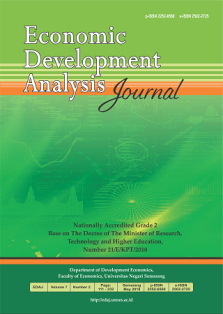Free Movement of Skilled Labor Within the Asean Economic Community
Abstract
This study discusses how the free movement of skilled labor policy under the ASEAN Economic Community (AEC) scenario enhances opportunities for labor mobility from low-skilled labor countries, what challenges will be faced, and how this policy impacts their economies. The implementation of the AEC’s free movement of skilled labor policy is projected to face challenges such as mismatched labor qualifications, fulfilling ASEAN commitment, time for implementation of ASEAN commitments, and controlling the flow of illegal migrant workers. However, ASEAN leaders already set some supporting policies to overcome challenges from this system by improving labor market information, encouraging language and skills training, managing government and public supports, expanding mutual recognition arrangements and enhancing social protection for migrant workers. If these supporting policies can be implemented, the AEC’s free movement of skilled labor policy will improve the quality of human resources in ASEAN, especially from lower-middle income countries including Indonesia, Cambodia, Laos, Vietnam, the Philippines, and Thailand. As the results, those six countries are expected to increase the high-skilled employment rates by 0.3 to 1.4 percent and the wage rates up to 10-20 percent in 2025. Thus, the projected increases in the employment and wage rates of ASEAN skilled labor will induce an expansion of the ASEAN economic growth to 7.1 percent in 2025.


